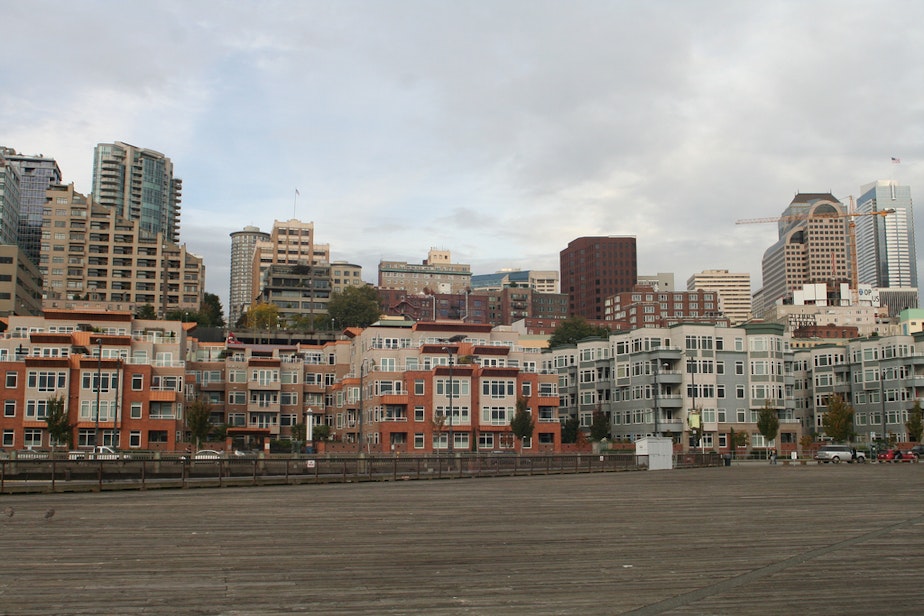All Those New Condos Might Not Make Seattle More Affordable

Adding or preserving 20,000 affordable housing units in Seattle sounds great for renters on paper.
But Sharon Lee, executive director of the Low Income Housing Institute, told KUOW’s Ross Reynolds there are some holes in Mayor Ed Murray's plan for housing over the next 10 years.
“The problem is that that particular count – the 20,000 new or preserved – doesn’t really take into account what we’re going to be losing over the next 10 years – affordable rental housing that’s unsubsidized and that’s not being counted in that mix,” Lee said, speaking on The Record.
The proposals unveiled Monday call for an upzone allowing developers to build taller buildings in about 16 percent of the city – including downtown, in urban villages, and along arterial streets – places where there is already significant density (see map). In return, residential developers would be required to build affordable housing within their projects or else pay the city to build them.
Developers could also build more densely on what have been single-family lots across the city – with row houses, duplexes and other forms of housing.
Sponsored
Some argue that developers, given more freedom to build denser in Seattle, might oversaturate the market and cause rental rates to drop. Lee disagrees with that analysis.
“Oftentimes the trickle-down theory is presented and it’s not actually true,” she said. “In Seattle there’s thousands of new, not just market rate, but luxury housing units being built, apartments being built, and the rents have not gone down during the same corresponding period of this boom.”
She said that has resulted in a city in which 48 percent of the renters of color pay more than 30 percent of their income in rent. And, she said, 45,000 households are paying more than 50 percent of their income in rent.
“So you have families of color and you have lower-wage workers that are quickly, very quickly, not going to be able to continue to live in Seattle,” she said. “So that’s why you’re going to see less diversity in Seattle unless something is done.”
So what can be done? She has a few ideas.
Sponsored
One is giving a “first right of refusal” to tenant or nonprofit organizations.
“A tenant co-op or a nonprofit or even a church group could assemble the financing and make an offer and buy the building and preserve it long term,” she said.
Another would require an act of the Legislature to allow rent control.
“In Washington state, houseboats have rent control. … Their moorage is a scarce commodity. Well, right now affordable rental housing is a scarce commodity,” she said. “So we think that the state Legislature should allow local control so that there could be some moderation so rents aren’t so high.”
Photo credit: "condo-hell," by Ryan Lackey on flickr (CC BY 2.0)

